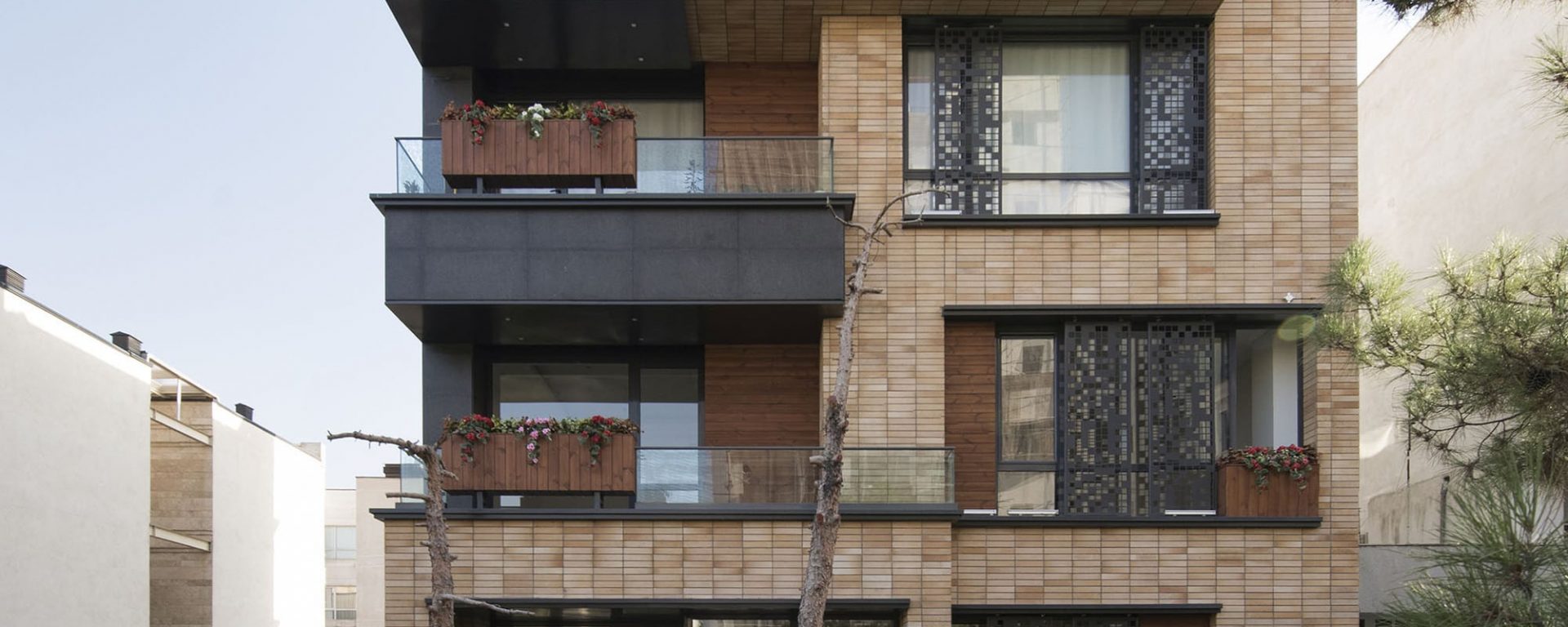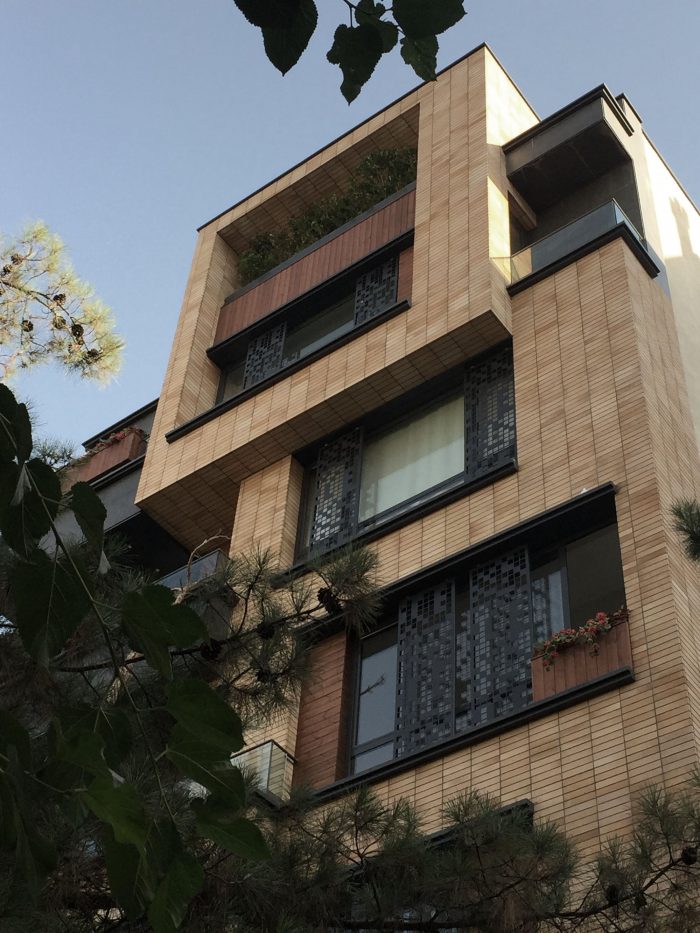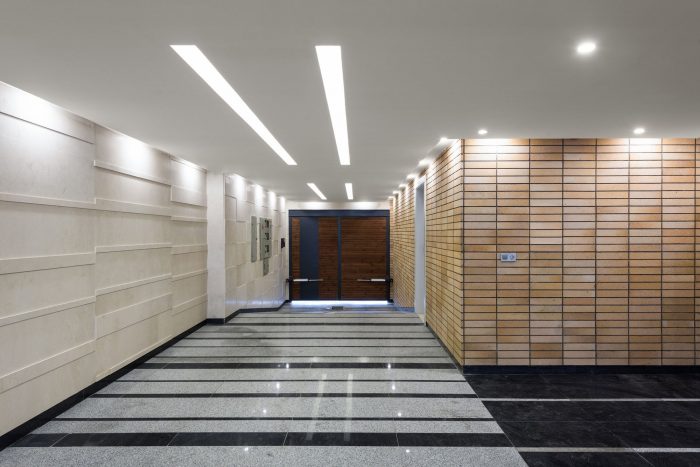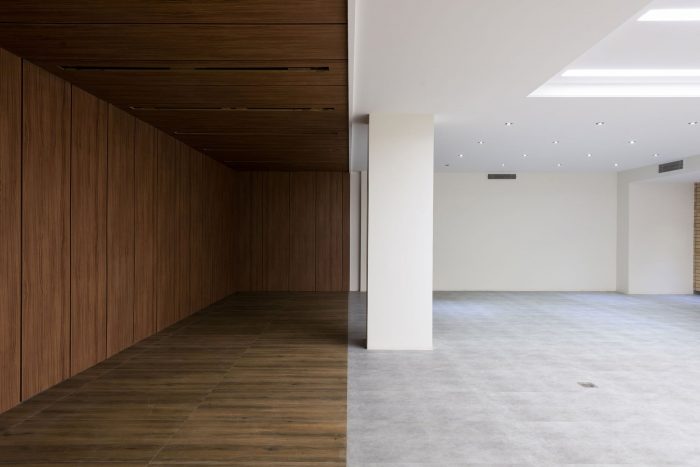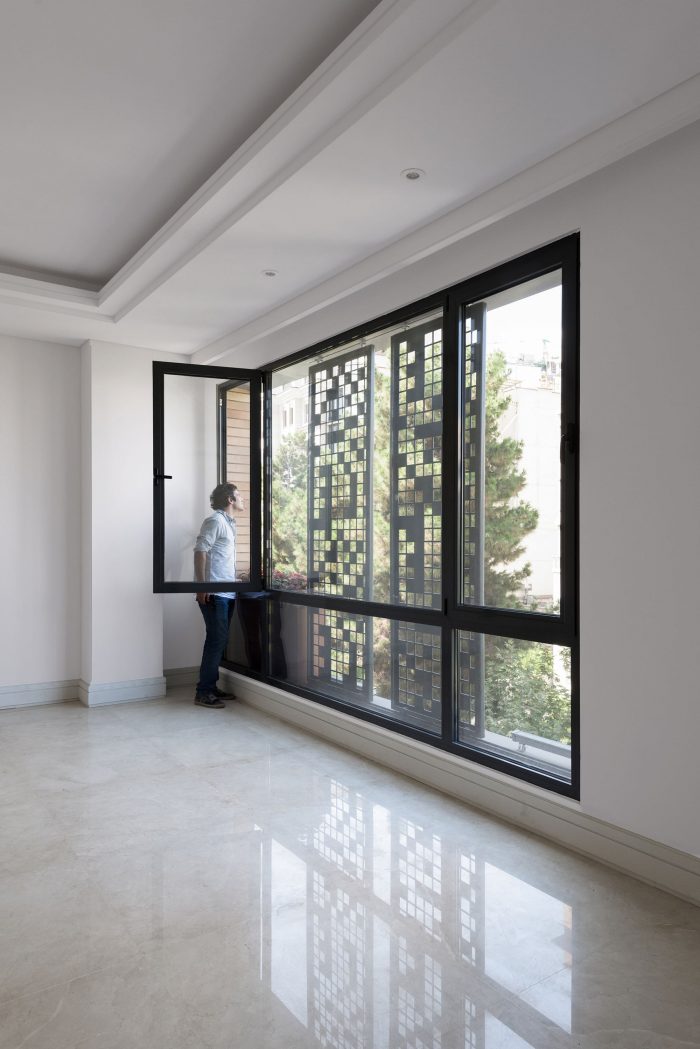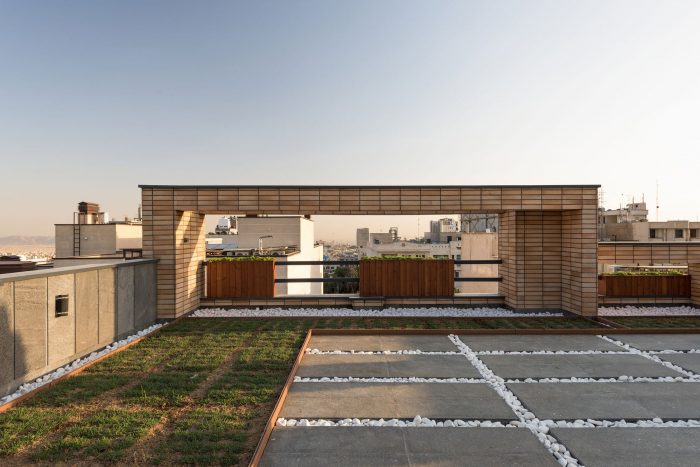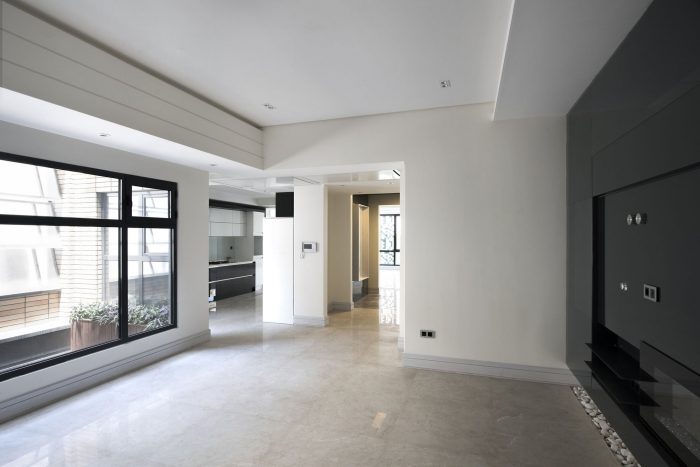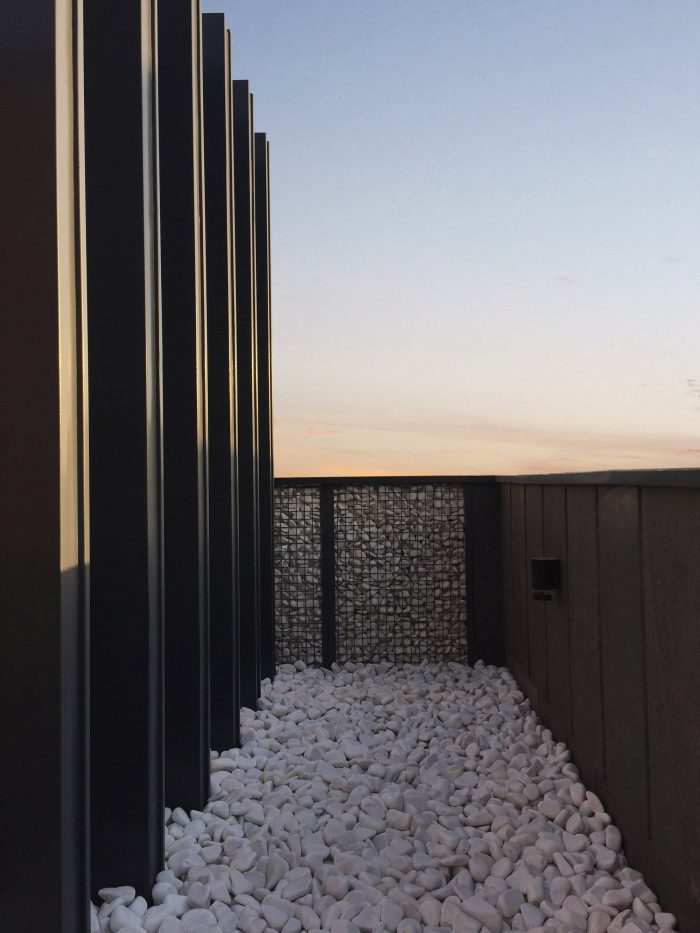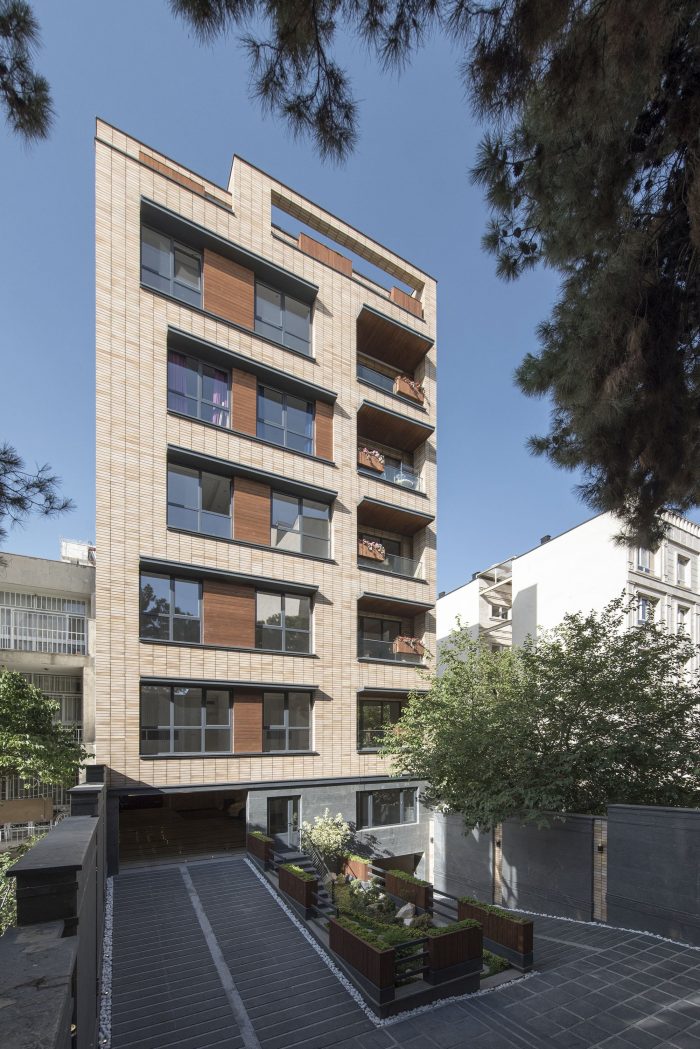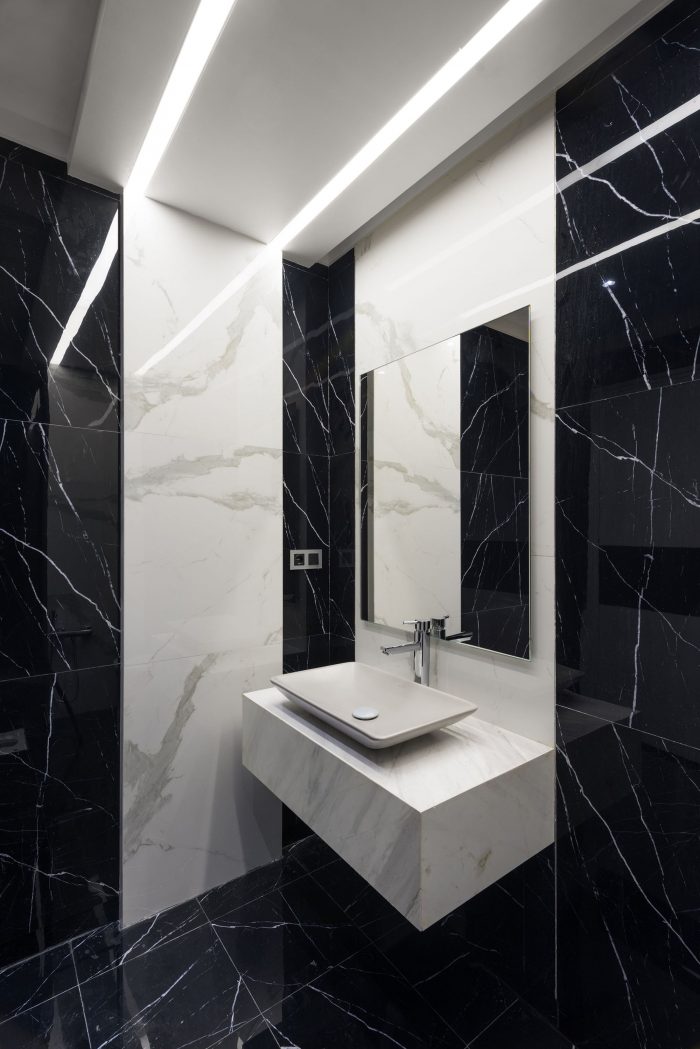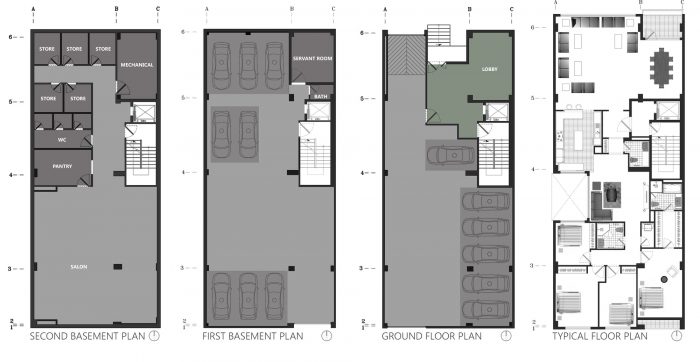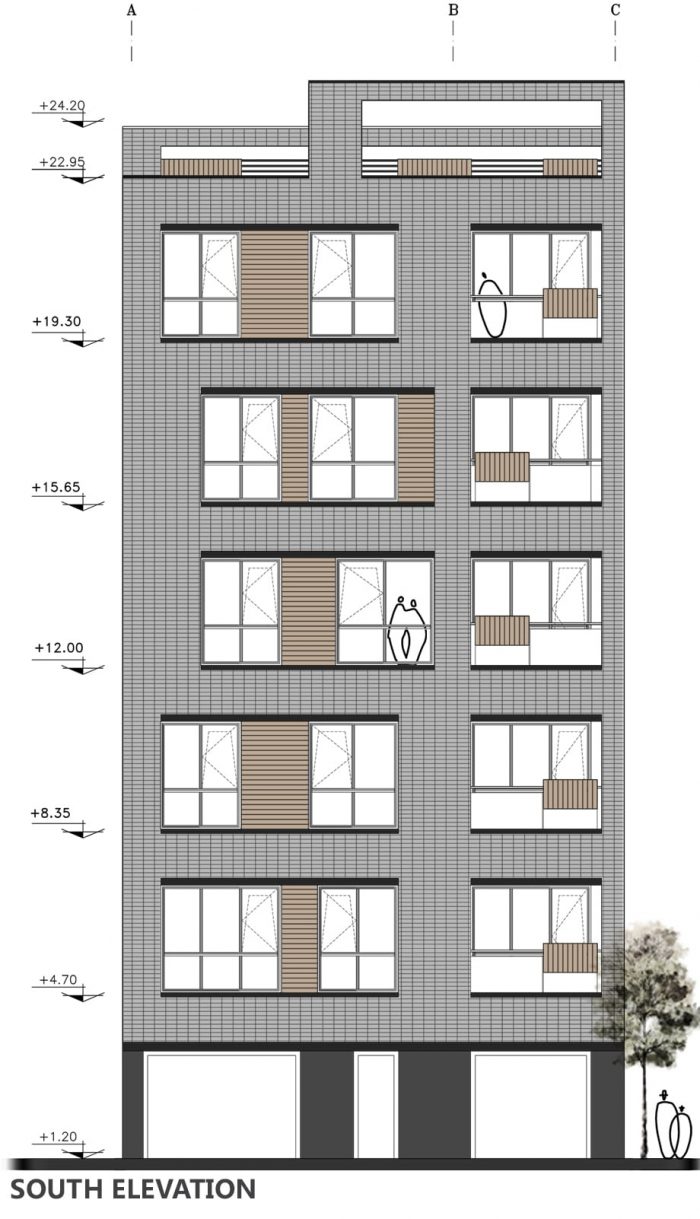建筑作为创造空间的艺术,除了提供居民需求的任务外,一直在寻求与环境建立联系,考虑到建筑在城市形成中的作用,在当代城市的背景下,建筑的重要性和建筑的智能设计,将具有重要意义。
Architecture as the art of creating space, in addition to the task of providing the needs of its inhabitants, has always sought to create connections with its environment and considering the role of buildings in the formation of cities, the importance of architecture and the intelligent design of buildings in the context of contemporary cities, will be significant.
Boostan的住宅楼占地450平方米,位于德黑兰中心街道之一的南侧。这条街道的特点是有许多树木,以及从街道西边到东边的明显的纵向坡度。该项目的主要结构是关注伊朗建筑和与邻近城市结构的和谐,以及项目外墙的城市绿色空间的扩展及其与屋顶花园的连接。
The residential building of Boostan is located on an area of 450 square meters and on the south side of one of the central streets of Tehran. Among the characteristics of this street are the presence of numerous trees, as well as a significant longitudinal slope from the west to the east of the street. The main structure of the project is attention to Iranian architecture and harmony with the adjacent urban fabric, as well as the extension of urban green space on the project’s facade and its connection to the roof garden.
为了使建筑与高贵的波斯建筑相一致,在设计项目的外墙时,利用了砖块作为外墙的主要结构,用数控切割的木材和金属遮阳板来控制光线和空间隐私。
In order to conform the architecture of the building with the noble Persian architecture, in designing the project’s facade, elements such as brick as the main structure of the facade, wood and metal sunshade with CNC cutting for light control and spatial privacy were utilized.
在接下来的设计中,建筑的形式是根据环境影响的结果,如街道的坡度和建筑周围的树木。为了在城市绿色空间和项目的绿色屋顶之间建立联系,建筑的主立面通过使用绿色阳台及其延伸到屋顶,创造出砖块体量的分层序列,从而获得动态形状。
In the following, the building form was constructed as a result of the susceptibility from the environmental impacts such as the slope of the street and the trees around the building. In order to establish a link between the urban green space and the green roof of the project, the main facade of the building obtain a dynamic shape by creating a hierarchical sequence of brick volumes through the use of green balconies and its extension to the roof.
本项目的另一个重点是在项目的不同部分规划了微观尺度的元素,在项目的外墙和内部建筑中都考虑了伊朗人的生活方式。
Another significant point in this project is the planning of micro scale elements in different parts of the project, which has been considered in terms of the Iranian lifestyle both in the facade and in the interior architecture of the project.
事实上,外墙的元素并没有与内部空间分离,而是作为内部空间的一部分。换句话说,抛开外墙,进入项目,项目内外兼容材料的使用就清晰可见。
In fact, the elements of the facade are not separated from the interior space but act as part of that. In other words, by putting aside the facade and entering the project, the use of compatible materials, both inside and outside the project, is clearly visible.
最后,与许多类似的项目不同,天井的设计是动态地、生动地进行的,不是作为一个被遗弃的、不重要的空间,而是作为空间的一个重要组成部分,从而使项目的内部空间,包括厨房、客厅和卧室的质量得到提高。
Finally, the patio design, unlike many similar projects, has been carried out dynamically and vividly, not as an abandoned and unimportant space but as an essential component of the space, resulting in an increased quality of the interior space of the project including the kitchen, living room and bedrooms.
Architects: Alidoost and Partners
Area : 2500 m²
Year : 2017
Photographs :Deed Studio
Manufacturers : Hansgrohe, Azarakhsh Brick, Porcelanosa Grupo
Assistant Technical Architect : Amir Niknafs
Team : Sahand Mohades, Parisa Soltani, Hamideh Raoufzadeh, Behnaz Behbahani, Arash Daryaee, Ghasem Naeiji
Client : Mr. Noormohamadi
Architects In Charge : Shahab Alidoost, Sona Eftekharazam
City : Tehran
Country : Iran

